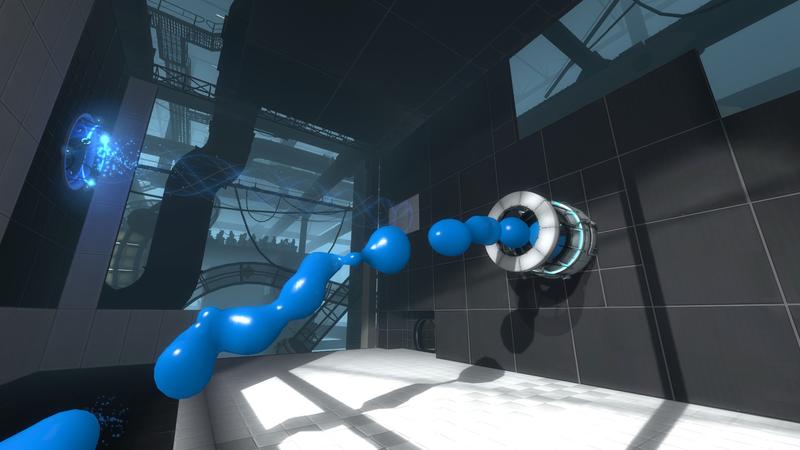
Ed Note: To go with our New Tech City episode on games that help your brain, we asked gaming expert Liza Stark at the Institute of Play to give a few suggestions about educational learning games for kids. if you don't know them, the folks at Institute of Play design games and game-like experiences to be used in schools. They recently published the PLAY List for the World Innovation Summit for Education. Working her fellow expertsh, here's her list.
First, what makes a game a powerful tool for learning?
- It creates a safe space for exploration, experimentation and tinkering. Failure fuels discovery, not disengagement.
- It supports creative output. Games that require a player to make something allows them to synthesize what they have learned and take ownership over it.
- It sets up a complex problem space. Good games are open-ended environments that have multiple pathways to the same solution. Learning becomes emergent through the meaningful choices players make.
Below is a short curated list of five games from the PLAY List that fulfill all of these criteria. For a more in depth discussion on each, check out our Playtime Online webinar series.

GAME 1: Dragonbox
This puzzle game will teach you algebra. Yes, algebra. The mechanics (actions that make up the game) are simple, strong, and sleek: players balance out “night” and “day" boxes on a divided screen and in the process isolate one last box. As players progress, the boxes become numbers and letters, isolated just the way you would an algebra variable. The abstraction allows players of any level to tinker intuitively with the underlying logic of math.

GAME 2: Scribblenauts
What if you had the ability to summon any object you needed to solve a problem? In Scribblenauts, words really do have magical powers. When confronted with a challenge, players type in a word, tapping a database of possible solutions. This imagination mechanic allows learners to build vocabulary skills.
While most good games offer many pathways to achieve the goal, it rarely feels as explicit as in Scribblenauts. It doesn't award more points for the *best* tool conjured. Efficiency is not the goal. This allows the player freedom to add their own constraints such as you cannot use a rope or you must use a specific set of words (a vocabulary list perhaps?). Appealing to the casual and serious gamer alike, this game is highly creative and extremely engaging.

GAME 3: Portal 2 + Level Editor
Physics class goes sci fi. In Portal 2, players are armed with a gun that allows them to temporarily suspend the laws of physics in order transport the character to another point in space.
They must complete a series of small puzzles to defeat the rogue Artificial Intelligence system stewarding an eerie industrial complex. With every wall, crevice and ceiling at their disposal, players must engage in complex problem-solving strategies. They must test and refine their trajectories, negotiating the relationship between space, momentum, and causality. Even better, players can design and share puzzles using the Puzzle Maker level editor.

GAME 4: Gamestar Mechanic
A villainous game-designer is on the loose! You, the player, are tasked to repair and contribute games in this steampunk-inspired world. Gamestar Mechanic is a game that teaches you how to design games. It takes a self-guided approach to tackle a variety of higher-order thinking skills. Designed with a focus on building systems thinking and design thinking competencies, the tagline for this game could be "21st Century Skills in a Box!"
Players begin by playing games to develop the critical perspective necessary to think like a game designer. As they complete levels, players amass a toolkit of components and knowledge that they can use to design their own game. Once they have finished creating their game, players can share it with a vibrant social network for others to play.

GAME 5: Minecraft + MinecraftEDU
If you have recently found yourself among a group of 13 year-olds, I am sure you have heard this word uttered with a mixture of reverence and excitement: Minecraft. Players can break the world into smaller blocks and place them elsewhere (mining), or they can combine blocks with other materials to create new blocks (crafting). You can build literally anything, from a working computer to a complete recreation of Westeros. My favorite part of Minecraft: using redstone to build circuits.
Often described as digital Legos, Minecraft teeters between game and sandbox, depending on which mode you're in. It has two modes: Survival and Creative. In Survival mode, you must build structures to keep out Creepers, mine blocks to collect resources, and maintain the health of your avatar. In Creative mode, these constraints dissolve, allowing the player to build with a vast and endless inventory of items. While the game was not designed explicitly for learning, educators have embraced it, building endless lessons and projects around it.

BONUS ROUND: SimCityEDU: Pollution Challenge!
Institute of Play’s project GlassLab just released a version of SimCity tailored specifically for educational use. Stepping into the role of city mayor, players must balance many interacting systems to keep the city thriving. The major difference between old and new SimCity is that play is broken down into ten minute challenges to address an urban issue. The challenges are designed to test the player’s systems thinking skills – in order to succeed in the game, players need to understand the complex relationships between the factors governing life in a modern city, like environmental impact, employment, and citizen happiness. While students play, the game’s back end gives teachers access to real-time data about what students are learning.
Liza Stark is a game designer at Institute of Play, a non-profit learning design studio that explores new models of learning and engagement. The Institute’s first project was the design and launch of the New York City public school, Quest to Learn.
